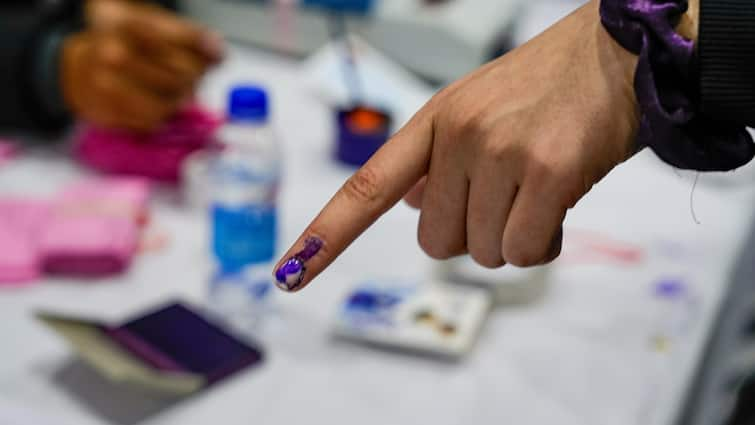As Bihar gears up for the Assembly elections, the stage is set for another high-stakes political showdown. Voting will take place on November 6 and 11, while the results for all 243 seats will be declared on November 14. The contest once again pits the ruling National Democratic Alliance (NDA) against the opposition Mahagathbandhan (Grand Alliance) in a clash that could reshape the state’s political future.
Over the past 25 years, Bihar’s politics has witnessed a complete transformation, including shifting caste equations to changing party loyalties and alliance realignments. The Grand Alliance, led by Tejashwi Yadav, faces an uphill task this time amid visible internal cracks. The coalition is staring at direct fights on 11 seats among its own allies, with the RJD and Congress contesting each other on six seats, Congress and CPI clashing on four, and VIP taking on the RJD in Chainpur. Meanwhile, JD(U) remains firmly allied with the BJP-led NDA.
How Bihar Voted Since 2000
From Lalu Prasad Yadav’s RJD era to Nitish Kumar’s long tenure, Bihar’s electoral history since 2000 tells a story of shifting allegiances and evolving voter priorities.
2000: The elections produced a hung assembly, with the RJD emerging as the single largest party, bagging 124 of the then 324 seats. Despite BJP’s backing, Nitish Kumar, representing the Samata Party, failed to secure a majority and resigned within seven days. Rabri Devi later formed the government with Congress and Left support. Later that year, Jharkhand’s creation reduced Bihar’s assembly strength to 243 seats.
2005: Political instability forced two elections in one year. The February poll led to President’s rule, while the October re-election saw the JD(U)-BJP alliance ending RJD’s 15-year dominance. Nitish Kumar became the Chief Minister, with JD(U) winning 88 seats and BJP 55.
2010: The NDA swept to a massive victory, securing 206 out of 243 seats. JD(U) bagged 115, BJP 91. Despite this mandate, Nitish Kumar resigned in 2014 after JD(U)’s poor Lok Sabha performance, paving the way for Jitan Ram Manjhi.
2015: In a stunning political twist, JD(U) joined hands with RJD and Congress to form the Mahagathbandhan, which won 178 seats (RJD 80, JD(U) 71, Congress 27). Nitish Kumar returned as Chief Minister, but the alliance collapsed in 2017 after corruption allegations against RJD. Kumar rejoined the NDA soon after.
2020: The RJD emerged as the single largest party with 75 seats, but the NDA managed a narrow overall victory. BJP won 74, JD(U) 43, and allies VIP and HAM(S) secured four seats each. Nitish Kumar became Chief Minister for a seventh term.
How Voter Turnout Patterns Changed
Bihar recorded its highest-ever voter turnout in 2000 at 62.6%. However, political instability in 2005 pushed participation below 50%. Turnout gradually recovered, reaching 57.1% in 2020, with a noticeable rise in women’s participation in the last two polls, a sign of growing civic engagement and gender parity in Bihar’s democratic process.
As Bihar heads to polls once again, its electorate stands at the crossroads of continuity and change. The 2025 election will test whether Nitish Kumar can extend his remarkable run, whether BJP’s growing clout reshapes the NDA, and if the RJD can finally convert its strong vote base into a winning mandate.
BJP’s Rise, JD(U)’s Decline
The 2005 and 2010 elections marked JD(U)’s golden years, with the party securing 88 and 115 seats respectively. However, its dominance began to fade after 2015, when its tally dropped to 71 despite being part of the victorious Mahagathbandhan.
By 2020, JD(U)’s strength had fallen to 43 seats, while BJP’s rise from 55 seats in 2005 to 74 in 2020 was unmistakable. The shift not only changed the NDA’s internal power equation but also positioned BJP as the senior partner in Bihar politics for the first time.
Nitish Kumar: The Constant In Bihar’s Shifting Politics
Nitish Kumar’s political journey has been as dynamic as Bihar’s electoral landscape. Beginning with the Janata Dal, he was first elected MLA in 1985. Though once a supporter of Lalu Prasad, Kumar broke ranks in 1994 to form the Samata Party with George Fernandes. By 1996, he had allied with the BJP, marking the start of a long and often turbulent partnership.
Since his first stint as Chief Minister in 2000, Kumar has switched sides three times between BJP and RJD-led alliances but has still managed to hold power after every election since 2005. With over 18 years as CM, he remains Bihar’s longest-serving leader, known for political agility and strategic adaptability.

